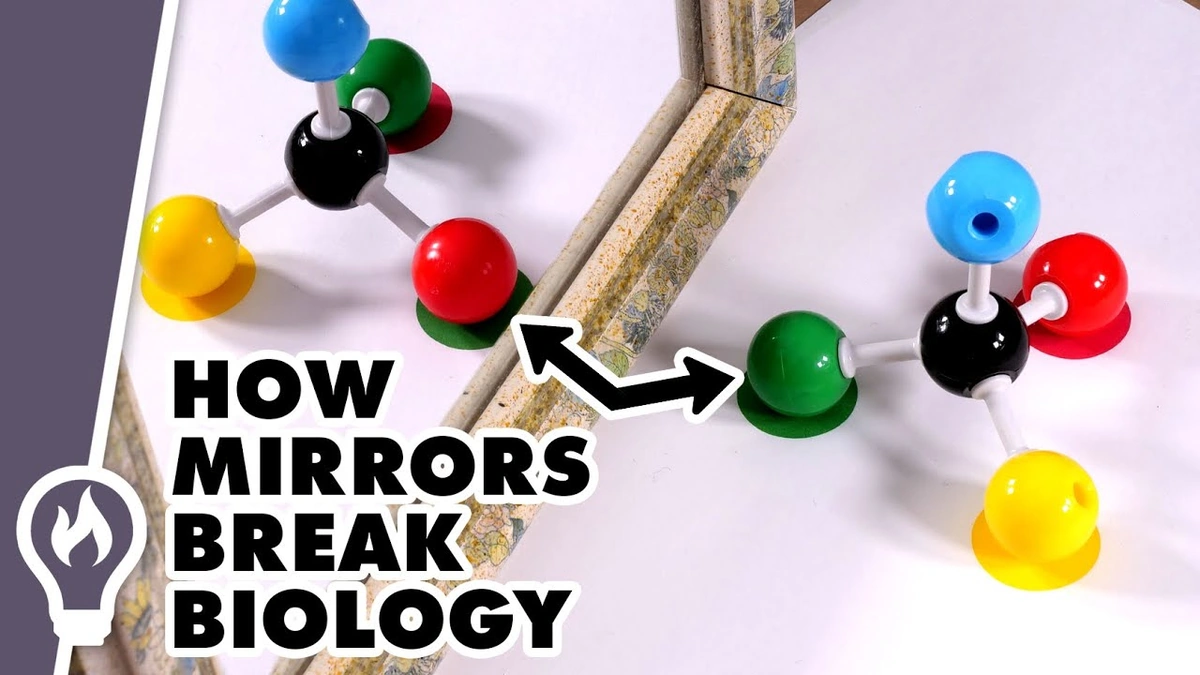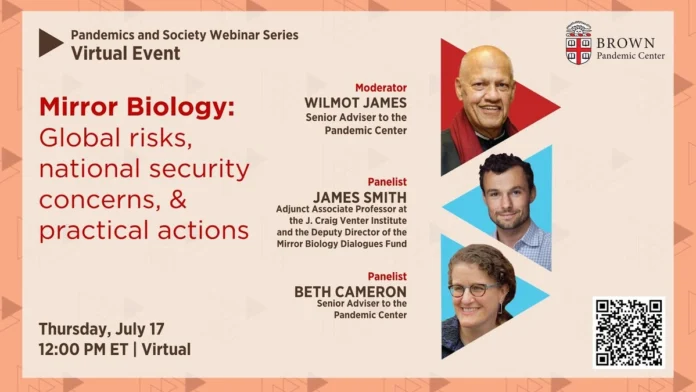Okay, let’s talk about something that sounds like pure science fiction but is rapidly becoming science fact: Mirror Biology . It’s not about looking in the mirror and seeing a reflection of yourself; it’s about manipulating the very building blocks of life to create molecules that are mirror images of the ones we know. Sounds wild, right? But here’s the thing: it could revolutionize medicine, materials science, and even our understanding of life itself.
What Exactly IS Mirror Biology?

Here’s the thing. In the world of molecules, especially biological ones, there’s this concept called chirality, or “handedness.” Think of your hands they’re mirror images of each other. Now, most biological molecules, like sugars and amino acids, come in one “hand.” Mirror biology is the art and science of creating molecules that are the opposite “hand.” Why bother? Well, that’s where things get interesting.
The implications of this science and the question of why it matters are the most critical things we need to explore today. Creating mirror-image molecules can have profound effects. For example, a mirror-image drug might not be broken down by the body’s enzymes, making it last longer and potentially be more effective. Or, a mirror-image material might have entirely new properties.
The “Why” Angle | Why Mirror Biology Matters to You
So, why should you, a regular person in India, care about some esoteric field of science? Because the potential benefits are enormous! Let’s break it down:
- Revolutionary Medicine: Imagine drugs that last longer, target diseases more effectively, and have fewer side effects. Mirror biology could make that a reality.
- New Materials: Mirror-image polymers could create materials with enhanced strength, flexibility, or resistance to degradation. This could lead to everything from better plastics to advanced textiles.
- Understanding Life: By studying mirror-image life forms, we can gain insights into the fundamental principles of biology and the origins of life itself.
Think about it – diseases that currently plague us could be treated with far more effective drugs. Our infrastructure could be built with materials that last longer and require less maintenance. And we could unlock secrets about the very nature of life that have eluded us for centuries.
How Mirror Biology is Shaping the Next Era of Life Sciences
Mirror Biology isn’t just a theoretical concept; it’s actively being pursued in labs around the world. Researchers are developing new techniques to synthesize mirror-image molecules and are exploring their potential applications in various fields. What fascinates me is how rapidly the technological landscape is evolving; what was once a distant dream is now within reach.
One of the biggest challenges is creating these mirror-image molecules efficiently and cost-effectively. Traditional chemical synthesis methods often result in a mixture of both “hands,” which is not ideal. But researchers are developing new enzymatic and catalytic methods that can selectively produce the desired mirror-image molecule. A common mistake I see people make is assuming this process is simple. It requires precision and expertise.
For instance, scientists at The Scripps Research Institute have developed a method to create mirror-image versions of peptides, which are short chains of amino acids. These mirror-image peptides have shown promise as drugs for treating cancer and other diseases. The beauty of this is that it is expanding on the natural process. According to a report by Chemical & Engineering News, creating mirror-image enzymes is another focus to help advance the synthesis process.
Ethical Considerations and Future Implications
Let’s be honest; with any powerful new technology, there are ethical considerations to address. What happens if we create mirror-image life forms that escape into the environment? What are the potential risks of using mirror-image drugs? These are important questions that need to be carefully considered. This is where the expertise of ethicists and policymakers comes into play. But, the potential benefits are so significant that it would be a mistake to shy away from this field.
As per the guidelines mentioned in various scientific journals, researchers are exploring the possibility of creating mirror-image organisms that can perform specific tasks, such as cleaning up pollution or producing valuable chemicals. Imagine bacteria that can break down plastic waste or algae that can produce biofuels! The possibilities are endless. Current advancements are impressive.
Mirror Biology has the potential to usher in a new era of life sciences, offering solutions to some of the world’s most pressing challenges. From revolutionary medicine to new materials and a deeper understanding of life, this field holds immense promise.
FAQ About Mirror Biology
What exactly does “chirality” mean in the context of mirror biology?
Chirality, or “handedness”, refers to the property of a molecule that cannot be superimposed on its mirror image. Think of your hands; they’re mirror images, but you can’t perfectly overlap them. Biological molecules often exist in only one chiral form, and mirror biology involves creating the opposite form.
Are there any mirror-image drugs currently available?
While there aren’t widespread mirror-image drugs yet, research is actively underway to develop them. One potential advantage is that mirror-image drugs might resist breakdown by the body’s enzymes, making them last longer and be more effective.
What are the main challenges in creating mirror-image molecules?
The primary challenge is selectively synthesizing the desired mirror-image form. Traditional chemical methods often produce a mix of both forms. Researchers are now developing enzymatic and catalytic methods to overcome this.
Could mirror biology help in environmental cleanup?
Yes, potentially! Researchers are exploring creating mirror-image organisms that can perform specific tasks, such as breaking down pollutants. This could offer innovative solutions for environmental remediation.
What are the potential risks of mirror biology?
Like any powerful technology, there are risks. These include the possibility of mirror-image organisms escaping into the environment and the potential side effects of mirror-image drugs. Careful ethical considerations are crucial.
Where can I learn more about the research in mirror biology?
You can follow the work on the National Institute of Health’s website.The National Institutes of Health often funds and publishes research in this field.
So, Mirror Biology is poised to reshape our world. Buckle up; we’re in for a wild ride! The future of medicine and more may depend on this.




